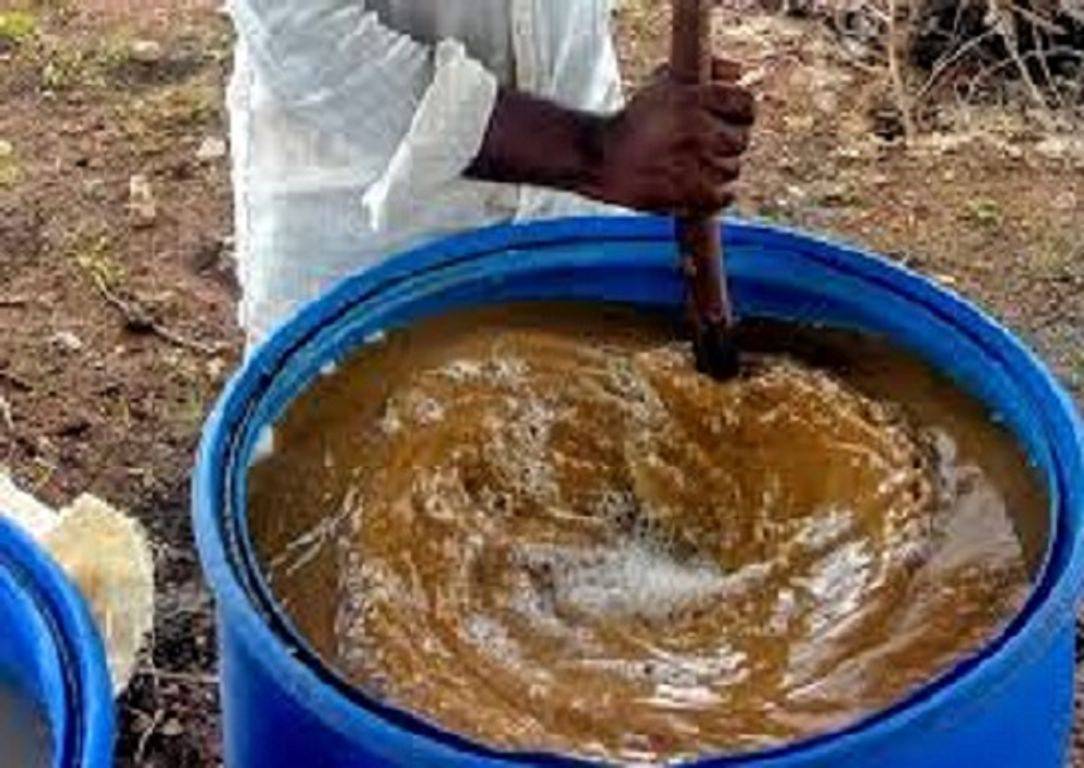
Jeevamrutha is a natural, low budget, fermented, microbial preparation that enriches the soil and helps the growth of micro organism and improves mineralization of the soil.
This bio – pesticide contains nearly 10% alcohol while spraying on the crops. Prior testing on few plants should be done to observe any damaging effects like – leaf burning, drooping, wilting, etc. In the biopesticides, the concentration of alcohol should be diluted with water as the alcohol based pesticides do not leave any residue on the plants or soil and gets easily washed off with rain/ water. Bio pesticides are naturally degradable once their pest control purpose is achieved.
There are three types of Jeevamrutha depending upon the amount of water contained in it:
-
The liquid state
-
The semi-solid state
-
The dry state (Ghana Jeevamrutham)
What is the use of Jeevamrutha?
Below we have mentioned the uses and benefits of Jeevamrutha;
-
It can be made at negligible cost with the plant leaves and urine available locally.
-
It has no side effects on the soil and the produce.
-
It boosts the plant and its growth, gives a good yield.
-
Gives resistance against pests and diseases.
-
Increases beneficial organism activity and promotes organic carbon in the soil.
How to Prepare Jeevamrutha at Home
Follow the steps given below to easily make Jeevamrutha;
-
Take any fresh leaves of tender succulent plants, leaves and shoots, which are crushed into a paste.
-
To this add fresh urine in a ratio of 1:3 (leaves: urine by weight). Creatinine present in the urine inhibits bacterial growth but permits yeast or fungal growth.
- Next, soaking dry yeast (1-2gms) in sugar/ jaggery, mixed in water 9100ml for 10 liters of biopesticide) – this baker’s yeast culture is added to the rest of the ingredients.
-
The mixture is then allowed to ferment for at least 2 weeks and the solid sludge is separated and squeezed.
-
The separated sludge is then used as an organic fertilizer and the filtered liquid is used as bio-pesticides to kill the eggs, larve, and adult pests on the crops and trees.
















